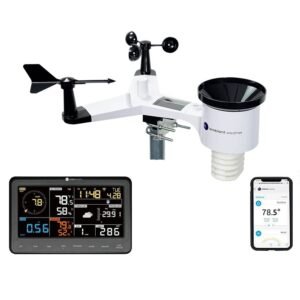Comparative/Action-Oriented (Encouraging Choice):

The Comparative/Action-Oriented Approach: Cutting Decision Noise & Driving Action Through Empowering Choice
We’ve all been paralyzed by options. Staring blankly at a menu with fifty items, scrolling endlessly through streaming services, or frozen when presented with multiple software solutions. Information overload and decision fatigue are the silent assassins of progress. Enter the Comparative/Action-Oriented approach, specifically designed to counter this paralysis by encouraging informed choice and direct action. It’s more than just presenting options; it’s about structuring them for clarity and paving a clear path forward.
Beyond Information Dump: The Power of Intelligent Comparison
Traditional approaches often fall into two traps:
- The Monolithic Pitch: Pushing a single solution regardless of fit ("This is the best! Trust me!").
- The Unstructured Data Dump: Overwhelming the audience with disconnected facts, features, and possibilities, leaving them to connect the dots (often incorrectly or not at all).
The Comparative/Action-Oriented model rejects both. Its core philosophy is meaningful comparison leading to defined action. Here’s why it works:
- Builds Trust & Credibility: Acknowledging alternatives shows you understand their world and aren’t just pushing your agenda. It positions you as an advisor, not just a salesperson.
- Reduces Cognitive Load: By structuring comparisons (e.g., side-by-side feature matrices, pros/cons lists for specific scenarios, cost/benefit breakdowns), you do the heavy lifting for the decision-maker. Complexity is transformed into digestible insights.
- Highlights Relative Value: Your offering doesn’t exist in a vacuum. Comparing it explicitly clarifies its unique strengths relative to competitors or alternatives. People understand value in context.
- Mitigates Decision Fatigue: When options are clearly contrasted against known criteria, the "what if" anxiety diminishes. The path becomes less ambiguous.
- Respects Autonomy: Ultimately, the decision rests with the other person. This approach empowers informed choice rather than forcing a conclusion. People commit more readily to choices they feel they’ve made autonomously.
How the "Action-Oriented" Component Seals the Deal
The "Comparison" part deals with understanding. The "Action-Oriented" part ensures that understanding converts into progress. This is the critical pivot point where decisions turn into results.
Techniques Demonstrating Action-Orientation with Choice:
- "Now That You Know X vs. Y…" Transitions: Use comparison insights as a springboard for action. "Now that we’ve seen how Option A saves 20% more time over Option B for your specific workflow, let’s look at your easiest next step to pilot it."
- Path-Specific Calls to Action: Don’t offer one generic "Buy Now!". Tailor the action step based on the highlighted preference. "If the flexibility of the Premium tier seemed most appealing during our comparison, clicking here sets up your trial. If you’re leaning towards the Core plan for its budget fit, we can discuss scaling options next week." (Offers two different actions based on preference).
- Trial-Triggered by Comparison Confidence: "Based on how strongly the comparison favored Platform X for easing your team’s admin burden, starting your free trial takes less than 5 minutes. Want to select your start date now, or later this afternoon?" (Clearly links the decision legwork to a low-barrier action).
- Scenario-Based Selection: Present different "next steps" for different potential outcomes identified in the comparison. "If security is now your top priority post-comparison, we should schedule a deep dive with our CTO. If integration speed is key, here’s immediate access to our API sandbox."
- "Based on Our Discussion…" Framing: Summarize the comparative key takeaways and immediately tie them to the most logical next action. "We agreed that while Project Y has faster onboarding, Project Z’s customization capabilities are essential for your growth phase. Taking ownership of the Z implementation plan seems like the strongest move forward. Let’s get those next-steps scheduled."
Implementing the Approach Effectively: Beyond Sales Pitches
While highly effective in sales and marketing ("Which plan best solves your specific challenge?"), this approach transcends pitching. It fosters better decision-making everywhere:
- Project Management: "Comparing the sprint approaches, Option A meets the deadline but has higher risk, Option B is safer but slower. Based on this, team, which action aligns with our current priorities? Vote & Confirm by EOD."
- Leadership Presentations: "Compared to maintaining the status quo, Initiative X boosts revenue by 15% but requires upfront investment, while Y improves retention at lower cost but slower gains. Leadership team, which direction should we commit resources towards?"
- Personal Coaching: "We’ve compared your feelings about staying in this role versus pursuing training. Option A offers stability but less fulfillment based on our talk. Option B involves risk but aligns more with your values. What small action today, aligned with Option B, feels achievable?"
- User Experience (UX): "Compare these two checkout flows. Version A prioritizes speed sign-in (ideal for repeat users), Version B emphasizes guest checkout/new user details (safer for first-timers). User testing showed 30% faster completion with guest checkout – let’s proceed with optimizing Version B."
Keys to Success: Avoiding Pitfalls
- Don’t Create False Equivalence: Comparisons must be honest and relevant. Avoid setting up "straw man" alternatives just to make your option look better. Integrity is paramount.
- Focus on Meaningful Differences: Compare based on criteria important to the decision-maker, not just what’s easiest for you to highlight.
- Clarity is King: Keep comparisons visual, concise, and jargon-free. Infographics, tables, or simple bullet points work wonders.
- Guide, Don’t Push: The goal is informed choice, not manipulation. Frame the action steps genuinely based on the uncovered preferences. Use phrasing like "which feels better aligned?" or "which action makes the most sense based on this?".
- Offer Few, Clear Actions: After comparison, present 1-3 specific, concrete next steps corresponding to different preferences or the most logical conclusion. Avoid reopening an endless loop of options.
Conclusion: Empowering Movement Through Clarity and Choice
The Comparative/Action-Oriented (Encouraging Choice) approach isn’t about simple persuasion; it’s about decision architecture. It recognizes that overwhelming choice breeds inaction. By providing structured, meaningful comparison that highlights relative value within a relevant context, you cut through the noise and reduce cognitive friction. Crucially, by then tying each potential decision path to a specific, relevant action, you transform understanding into tangible progress.
Whether you’re guiding customers, leading teams, or helping yourself navigate complexity, applying this model fosters greater autonomy, builds deeper trust, and significantly increases the odds that clarity leads directly to committed action. It’s the antidote to decision paralysis – structure the choice, then pave the path forward.
-
Sale!

2025 Music Boxing Machine for Adults and Kids, Smart Bluetooth Boxing Training Equipment with Gloves Wall Mounted, Workout Punching Machine for Home,Office and Gym
Original price was: $109.99.$49.99Current price is: $49.99. Buy product -
Sale!

Amazon Basics Smart Plug, Works with Alexa Only, 2.4 GHz Wi-Fi, No Hub Required, 4-Pack, White
Original price was: $25.99.$23.09Current price is: $23.09. Buy product -

Amazon Echo Auto (newest model), Add Alexa to your car
$20.00 Buy product -
Sale!

Ambient Weather WS-2902 WiFi Smart Weather Station
Original price was: $199.99.$169.99Current price is: $169.99. Buy product






























